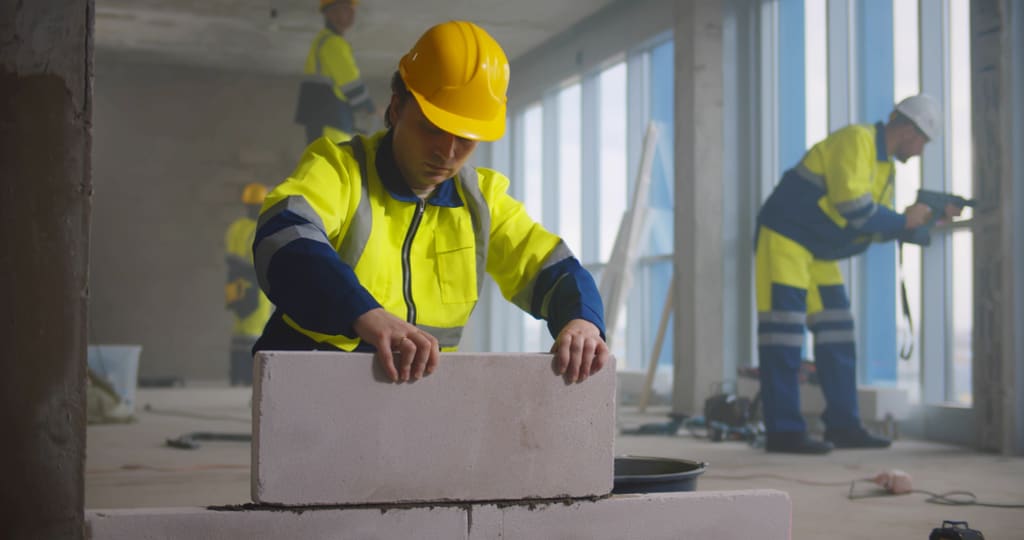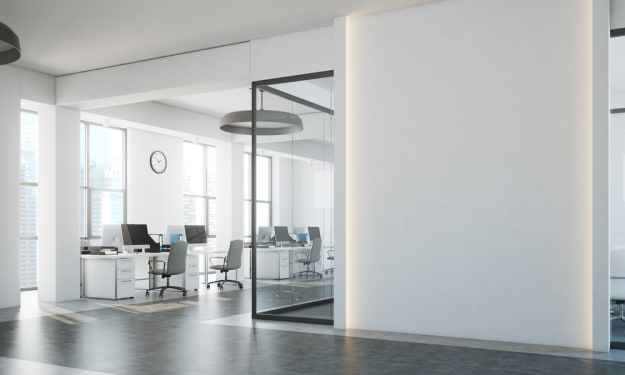Understanding and Managing Office Renovation Costs in 2024
Master Office Renovation Costs in 2024 with Essential Tips for Budgeting and Planning a Successful Upgrade

Introduction
Renovating an office space can breathe new life into your business environment, boosting productivity, improving employee morale, and creating a professional atmosphere that impresses clients. However, office renovation costs can be significant and complex, making it essential to plan carefully and budget wisely. This blog aims to provide a comprehensive guide to understanding and managing office renovation costs in 2024, helping you navigate the process with confidence and control.
Understanding Office Renovation
1. Definition and Scope of Office Renovation
Office renovation involves the process of updating and improving office spaces to enhance functionality, aesthetics, and efficiency. Unlike residential renovations, which focus on living spaces, office renovations are designed to create productive work environments that meet the specific needs of businesses. This can include anything from minor cosmetic updates to major structural changes.
2. Differences Between Office and Residential Renovations
While both office and residential renovations aim to improve space, their purposes and requirements differ significantly. Office renovations often require considerations for technological infrastructure, employee workspaces, meeting rooms, and compliance with commercial building codes. Additionally, office renovations typically involve higher traffic areas and must accommodate business operations during the renovation process, making planning and execution more complex.
3. Typical Reasons for Renovating an Office Space
Businesses may choose to renovate their office space for various reasons, including:
- Expanding or downsizing: Adjusting the office size to fit the current workforce.
- Modernizing: Updating outdated decor and facilities to create a contemporary workspace.
- Enhancing functionality: Improving layout and infrastructure to support better workflows.
- Compliance and safety: Meeting new regulations and ensuring a safe working environment.
- Improving employee satisfaction: Creating a comfortable and inspiring work environment.
Initial Planning and Budgeting
1. Importance of Initial Planning
Successful office renovation begins with thorough initial planning. This step involves assessing your current office space, identifying the goals of the renovation, and understanding the specific needs of your business and employees. Early planning helps prevent costly mistakes and ensures that the project stays on track.
2. Setting a Realistic Budget
Establishing a realistic budget is a critical component of any renovation project. Begin by researching the average costs for similar office renovations in your area. Consider all potential expenses, including materials, labor, permits, and unexpected contingencies. Setting a budget that accounts for these factors will help you manage costs effectively and avoid financial strain.
3. Engaging Stakeholders and Getting Input
Involving key stakeholders, such as employees, managers, and clients, in the planning process is essential. Gathering input from those who use the space daily can provide valuable insights into what improvements are needed and what features will enhance productivity and satisfaction. Regular communication with stakeholders ensures that the renovation meets everyone's needs and expectations.
Estimating Costs
1. Overview of Cost Estimation
Accurately estimating the costs of an office renovation requires a detailed approach. While online calculators and general estimates can provide a starting point, consulting with professionals like architects, contractors, and interior designers will yield more precise figures. Detailed cost estimates help in setting realistic budgets and securing necessary funding.
2. Importance of Detailed Estimates
Detailed cost estimates break down all elements of the renovation project, from demolition and construction to finishing touches like painting and furnishing. This level of detail allows you to see where your money is going and identify areas where you might save. It also helps prevent surprises by providing a comprehensive view of all expected expenses.
3. Tools and Resources for Cost Estimation
Several tools and resources can aid in estimating office renovation costs. Software like construction management tools can offer templates and calculators to streamline the estimation process. Additionally, industry reports and cost guides provide benchmarks for various types of renovations, helping you gauge average costs for different project components.
With a clear understanding of the planning and budgeting process, you are well-prepared to embark on your office renovation journey. In the next part, we will delve into the key cost factors that influence office renovation expenses, providing insights on how to manage and optimize these costs effectively.
Labor and Material Costs
1. Impact of Inflation on Labor and Materials
In recent years, inflation has significantly impacted the costs of labor and materials, making it crucial to account for these fluctuations when planning an office renovation. Prices for essential materials such as steel, lumber, and drywall can vary widely, directly influencing the overall budget. Similarly, labor costs can increase due to market demand and availability of skilled workers.
2. Quality Considerations for Materials and Labor
Choosing high-quality materials and skilled labor can elevate the longevity and functionality of your office renovation. While it might be tempting to cut costs by opting for cheaper alternatives, this can lead to higher maintenance expenses and shorter lifespans for renovations. Investing in durable materials and experienced contractors ensures that your renovation stands the test of time, providing better value in the long run.
3. Strategies to Manage Labor and Material Costs
To manage labor and material costs effectively, consider the following strategies:
- Bulk Purchasing: Buying materials in bulk can often secure discounts.
- Negotiating Contracts: Work with contractors to negotiate fair prices and establish clear contracts to avoid unexpected costs.
- Alternative Materials: Explore cost-effective material alternatives that do not compromise on quality.
- Project Scheduling: Plan the renovation during off-peak seasons when labor costs might be lower.
Building Use and Requirements
1. Specialized Equipment and Fixtures
The intended use of your building significantly impacts renovation costs. For instance, medical offices require specialized equipment and fixtures, which can be more expensive compared to standard office supplies. Understanding the specific requirements of your office type helps in creating an accurate budget.
2. Variations in Costs by Building Type
Different types of buildings come with varying renovation costs. High-rise office buildings, for example, often require more extensive renovations compared to single-story office spaces due to additional structural and safety considerations. Government buildings and medical facilities typically incur higher costs due to strict regulatory requirements and the need for specialized systems.
3. Case Studies of Different Office Types
- Medical Offices: Renovating a medical office involves compliance with health regulations, installation of specialized medical equipment, and creating sterile environments. These factors can significantly increase costs.
- Tech Startups: Renovations for tech companies might focus on open spaces, high-speed internet infrastructure, and collaborative areas, leading to different cost structures.
- Corporate Offices: Large corporate offices may require extensive reconfigurations, high-end finishes, and advanced security systems, adding to the overall expense.
Location-Based Cost Variations
1. Urban vs. Rural Renovation Costs
The location of your office plays a crucial role in determining renovation costs. Urban areas typically have higher labor and material costs due to increased demand and higher living expenses. Additionally, obtaining permits and complying with city regulations can be more expensive in metropolitan areas compared to rural locations.
2. Impact of Regional Climate and Local Regulations
Regional climate can also influence renovation costs. For example, offices in areas prone to extreme weather conditions may require additional insulation, stronger structural elements, and weatherproofing, increasing overall expenses. Local building codes and regulations can further affect costs, necessitating compliance with specific construction standards.
3. Neighborhood-Specific Cost Factors
Even within the same city, different neighborhoods can have varying renovation costs. Up-and-coming areas might demand higher renovation budgets due to their popularity and development potential. Conversely, established business districts might have higher permit fees and stricter zoning laws, adding to the cost of renovations.
Renovation Scope and Complexity
1. Full-Scale vs. Partial Renovations
The scope of your renovation significantly impacts costs. Full-scale renovations, which involve extensive structural changes, new layouts, and comprehensive updates, are naturally more expensive than partial renovations focusing on specific areas like a conference room or reception area.
2.Adaptive-Reuse Renovations
Adaptive-reuse renovations, where a building’s original purpose is significantly altered, often come with higher costs. For example, converting a warehouse into an office space involves substantial changes to the building’s layout, electrical systems, and plumbing, resulting in increased expenses.
3. Examples of Complex Renovation Projects
- Warehouse to Office: This type of renovation requires reconfiguring large open spaces into functional office areas, installing HVAC systems, and ensuring compliance with office safety standards.
- Historic Building Renovations: Renovating historic buildings involves preserving architectural elements while updating the space to meet modern office requirements, which can be both challenging and costly.
- Multi-Story Office Buildings: These renovations might include updating elevators, reconfiguring floor layouts, and installing advanced security systems, contributing to higher costs.
With a clear understanding of the key cost factors in office renovations, you can better anticipate expenses and plan accordingly. In the next part, we will explore how to manage these costs effectively, including detailed cost breakdowns, budgeting strategies, and working with contractors to ensure a successful renovation.
Detailed Cost Breakdown
1. Cost Per Square Foot Analysis
Understanding the cost per square foot is essential for managing your renovation budget. On average, office renovations can range from $40 to over $450 per square foot, depending on factors such as location, building type, and the extent of the renovation. Breaking down costs per square foot provides a clearer picture of where your budget is going and helps identify areas for potential savings.
2. Common Cost Components
- Labor: Labor costs include wages for construction workers, electricians, plumbers, and other skilled trades. Labor can account for a significant portion of your renovation budget, especially in high-demand urban areas.
- Materials: This includes costs for building materials such as drywall, flooring, paint, and fixtures. The choice of materials—whether standard or high-end—will affect your overall expenses.
- Permits and Fees: Obtaining the necessary permits and complying with local building codes can incur additional costs. Permit fees vary by location and the scope of the work.
- HVAC and Plumbing: Upgrading or installing new HVAC and plumbing systems can be costly but is essential for creating a comfortable and functional office space.
- Electrical Systems: Modern offices require robust electrical systems to support computers, lighting, and other equipment. Electrical upgrades ensure safety and efficiency.
- Finishing Touches: Final touches like painting, carpeting, and furnishings complete the renovation and contribute to the office's aesthetic appeal.
3. Real-World Examples of Cost Breakdowns
- Small Office Renovation: A 1,000 square foot office might cost $60,000 to renovate, with expenses allocated to labor ($25,000), materials ($20,000), permits ($5,000), HVAC and plumbing ($5,000), and finishing touches ($5,000).
- Large Corporate Office: Renovating a 10,000 square foot space could cost upwards of $3 million, with detailed allocations for high-end materials, advanced security systems, and extensive HVAC and electrical work.
Budgeting and Financing Options
1. Setting and Sticking to a Budget
Creating a realistic budget is the foundation of a successful office renovation. Begin with a thorough cost estimate and add a contingency fund (typically 10-20% of the total budget) for unexpected expenses. Regularly track expenses against your budget to ensure you stay on course.
2. Financing Options for Office Renovations
- Bank Loans: Securing a loan from a bank can provide the necessary funds for your renovation. Compare different loan options to find favorable interest rates and terms.
- Credit Lines: A line of credit offers flexibility, allowing you to draw funds as needed for the renovation.
- Government Grants: Explore any available grants or incentives for business renovations, particularly those aimed at improving energy efficiency or accessibility.
- Leasing Options: Some companies offer leasing options for office equipment and furniture, spreading out costs over time.
3. Tips for Managing Unexpected Costs
- Detailed Planning: Thorough initial planning helps anticipate potential issues and reduce unexpected costs.
- Regular Monitoring: Keep a close eye on expenses throughout the renovation and make adjustments as needed to stay within budget.
- Contingency Fund: Always include a contingency fund to cover unforeseen expenses without derailing the entire budget.
Working with Contractors
1. Choosing the Right Office Renovation Contractor
Selecting the right contractor is crucial for a successful renovation. Look for contractors with experience in office renovations, positive client reviews, and appropriate licensing and insurance. A good contractor will provide detailed estimates, clear communication, and high-quality work.
2. Importance of Clear Communication
Establishing clear communication with your contractor ensures that everyone is on the same page regarding project goals, timelines, and budgets. Regular meetings and updates help address any issues promptly and keep the project on track.
3. Contract Types and Their Impact on Costs
- Fixed-Price Contracts: These contracts set a predetermined price for the entire project, providing cost certainty but less flexibility for changes.
- Cost-Plus Contracts: These contracts involve paying for actual costs plus a fee, offering flexibility but potentially leading to higher costs if not managed carefully.
- Time and Materials Contracts: These contracts bill for the actual time and materials used, suitable for projects with uncertain scopes but requiring close monitoring to control costs.
Cost-Saving Tips and Best Practices
1. Value Engineering and Alternative Materials
Value engineering involves finding cost-effective alternatives to high-cost materials and methods without compromising on quality. Work with your contractor to identify areas where you can substitute materials or simplify designs to save money.
2. Reusing and Repurposing Existing Elements
Consider reusing existing elements of your office space, such as furniture, fixtures, and partitions. This approach not only saves money but also reduces waste and supports sustainability.
3. Timing and Phasing Strategies to Save Costs
Phasing the renovation can help spread out costs and minimize disruption to business operations. For example, you might renovate one section of the office at a time or schedule work during off-hours to avoid downtime.
Conclusion
Office renovations can be complex and costly, but with careful planning, budgeting, and management, you can create a functional and inspiring workspace that meets your business needs. Engage professionals, communicate clearly, and remain flexible to navigate challenges and achieve a successful renovation.
FAQs
1. What is the average cost of office renovation per square foot?
o The average cost of office renovation can range from $40 to over $450 per square foot, depending on factors such as location, building type, and renovation scope.
2. How can I save money on my office renovation?
o You can save money by value engineering, reusing existing elements, bulk purchasing materials, and carefully managing labor costs.
3. What are the hidden costs in office renovations?
o Hidden costs can include permit fees, unexpected structural issues, additional labor for unforeseen tasks, and costs related to compliance with building codes.
4. How long does an office renovation typically take?
o The duration of an office renovation depends on the project's scope and complexity but can range from a few weeks for minor updates to several months for extensive overhauls.
5. Do I need permits for an office renovation?
o Yes, most office renovations require permits to ensure compliance with local building codes and regulations. The specific permits needed will depend on the nature and scope of the work.
With these insights and strategies, you're well-equipped to manage office renovation costs effectively and create a space that supports your business's success. For additional guidance and support, consider consulting with an experienced office renovation contractor to bring your vision to life.
About the Creator
Fajr Interiors
Elite Interiors, an innovative interior design company in Dubai, transforms spaces with bespoke solutions, blending luxury and functionality to create your dream environment.
Enjoyed the story? Support the Creator.
Subscribe for free to receive all their stories in your feed. You could also pledge your support or give them a one-off tip, letting them know you appreciate their work.






Comments
Fajr Interiors is not accepting comments at the moment
Want to show your support? Send them a one-off tip.